Introduction to Emergency Dentistry and Same-Day Treatments
Emergency dentistry addresses urgent dental problems that require immediate care to alleviate pain, prevent complications, and restore oral health. With advances in dental technologies and evolving care models, same-day emergency dental treatments have gained traction in delivering timely and effective care. This article explores the supporting data on the success rates, factors influencing efficacy, outcomes, and demographic insights into same-day emergency dental procedures. By synthesizing research findings, epidemiological data, and technological innovations, we aim to provide a comprehensive overview of the viability and benefits of emergency dental programs and procedures performed on the same day.
Current Landscape and Epidemiology of Dental Emergencies
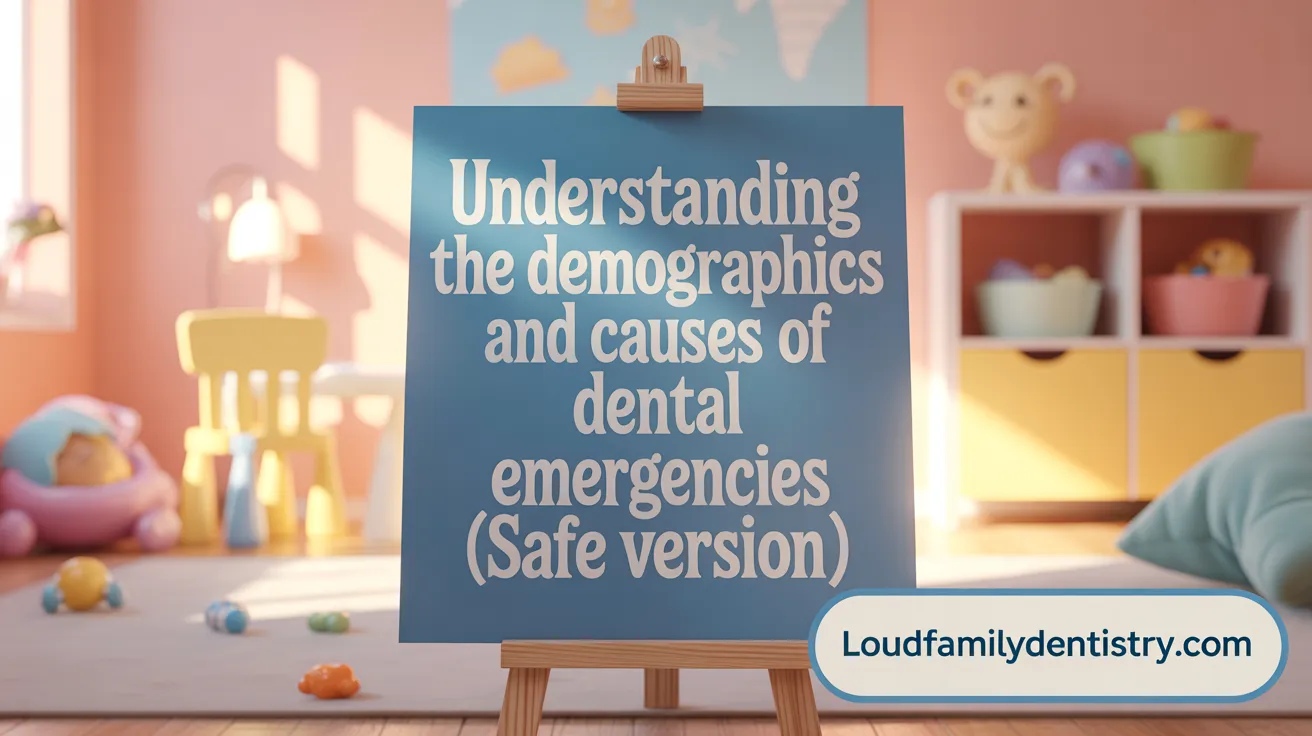
What epidemiological and demographic data are relevant to dental emergencies?
Dental emergencies make up about 10% of all dental encounters, with a higher proportion among adults (20%) compared to children (6%). The highest rates of emergency visits are seen in young adults aged 20-29, highlighting this age group's vulnerability.
Demographic factors influencing these visits include age, gender, and socioeconomic status. Males tend to visit emergency departments more often for dental issues, and children aged 7-11 are more prone to trauma caused by falls, sports injuries, and accidents.
Most emergency visits peak during late afternoons and late evenings, particularly between 5 PM and midnight, indicating that many cases occur outside regular dental office hours.
The primary causes of dental emergencies are pulp-related problems, such as unresolved caries or pulpal infections, periodontal issues, and trauma, including fractures and avulsions. Pain remains the chief complaint across all age groups.
Referral patterns show that more cases are referred on weekends, although this does not seem to affect the likelihood of follow-up. Interestingly, geographic factors like fluoridation status do not significantly influence emergency visit rates.
Understanding these epidemiological and demographic patterns helps healthcare providers develop targeted prevention strategies, allocate resources efficiently, and improve emergency dental care access.
| Demographic Aspect | Data/Trend | Additional Notes |
|---|---|---|
| Age groups | Peak in 20-29 years | Young adults most affected |
| Gender | Males higher | More trauma reported |
| Children | 7-11 years | Higher trauma from falls |
| Timing | Peak between 17:00-24:00 | Outside working hours |
| Causes of ED visits | Pulp-related (37%), periodontal (23%), trauma (22%) | Most common complaints are pain |
| Referral patterns | More on weekends | No significant change in follow-up rates |
| Geographic factors | No significant impact | Fluoridation status less influential |
This data underscores the importance of early prevention, community education, and accessible emergency services to manage dental crises effectively.
Patient Demographics and Patterns in Emergency Dental Care Utilization
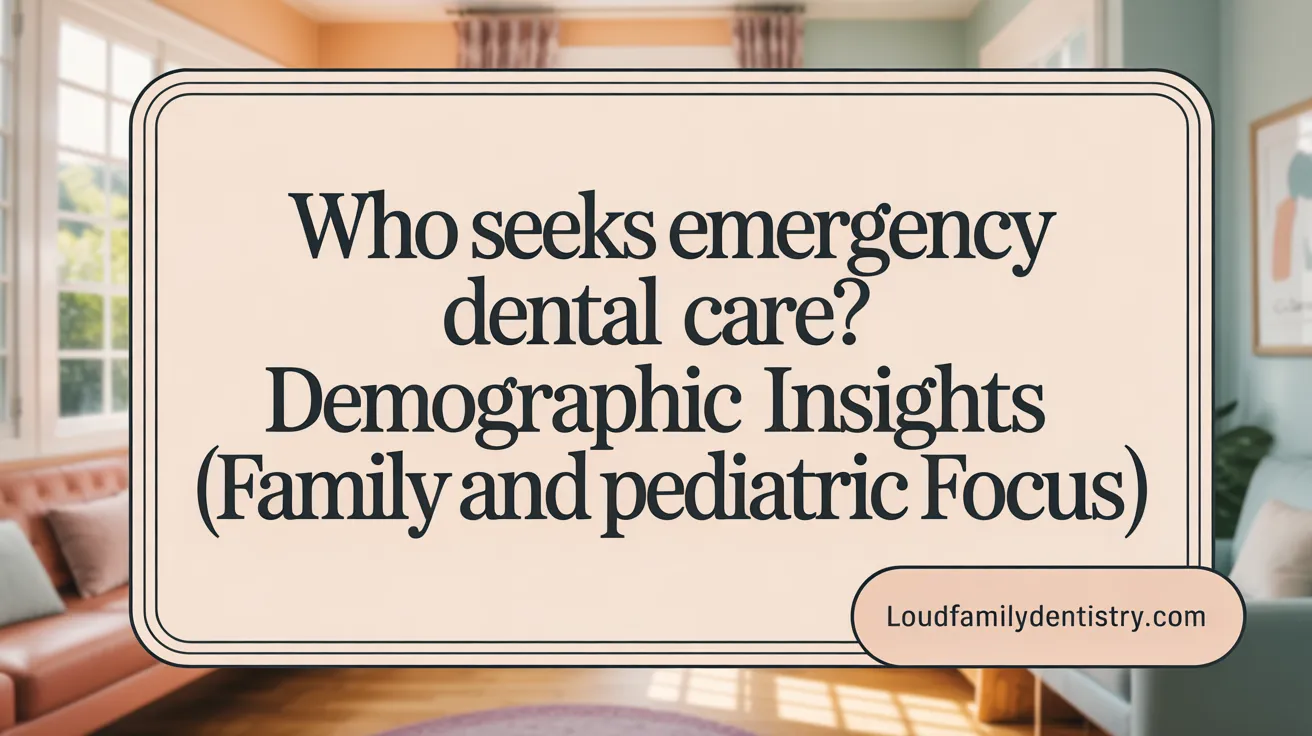
What epidemiological and demographic data are relevant to dental emergencies?
Research on adult patients presenting with dental emergencies provides valuable insights into who is most affected and how care patterns are structured. In a study at Kaohsiung Medical University Hospital, 1964 adult patients were analyzed, with a nearly even gender split—52.4% male and 47.6% female—and an average age of 45.6 years. Notably, the highest rate of emergency visits occurred among the 20-29 year age group, indicating young adults are particularly vulnerable to dental crises.
Patients seeking emergency dental care often share certain socioeconomic and health characteristics. They are typically from lower-income ZIP codes, CPR with fewer prior preventive dental visits, and may have additional medical health issues. These factors likely contribute to higher emergency department (ED) utilization.
Women aged 21-34 emerged as the most frequent demographic group for ED dental visits, highlighting a gender and age trend in emergency care patterns. Emergency visits commonly peak between 17:00 and midnight, accounting for about 42.1% of cases, which suggests that many individuals seek urgent care after working hours or during evenings.
Timing and reasons for emergency visits
Most dental emergencies are driven by pain, reported by nearly half (49.8%) of patients, followed by swelling (23.9%) and trauma (22.2%). These chief complaints align with primary diagnoses, chiefly pulp-related issues (36.7%) and periodontal problems (22.9%), underscoring the urgent need for pain relief and infection management.
The most common reasons for visits, coupled with peak timing, highlight the importance of accessible emergency services during extended hours and targeted educational strategies for younger adults and working populations.
Socioeconomic status and insurance influence
Studies reveal a marked association between socioeconomic factors and emergency dental utilization. Uninsured and Medicaid patients tend to visit EDs more frequently than those with private insurance, often due to barriers in accessing regular dental care.
The average cost per ED visit for dental issues is approximately $1,487, which is significantly higher compared to routine dental visits costing around $90 to $200. Such disparities contribute to increased healthcare costs and suggest a need for improved preventive care access to reduce emergency cases.
Patterns of ED visits for dental issues
In terms of visit frequency, about 78% of patients returned within a year for follow-up or further treatment, with many seeking definitive solutions like restorations or extractions. Interestingly, a significant number of these patients had not previously received treatment at the hospital, often seeking care during weekends or holidays, times when regular clinics are closed.
Overall, the data illustrate that dental emergencies follow specific demographic and temporal patterns, heavily influenced by socioeconomic status and access to preventive dental services. Understanding these trends is vital for developing targeted public health interventions and improving emergency dental care systems.
Success Rates and Treatment Acceptance in Same-Day Emergency Dental Care
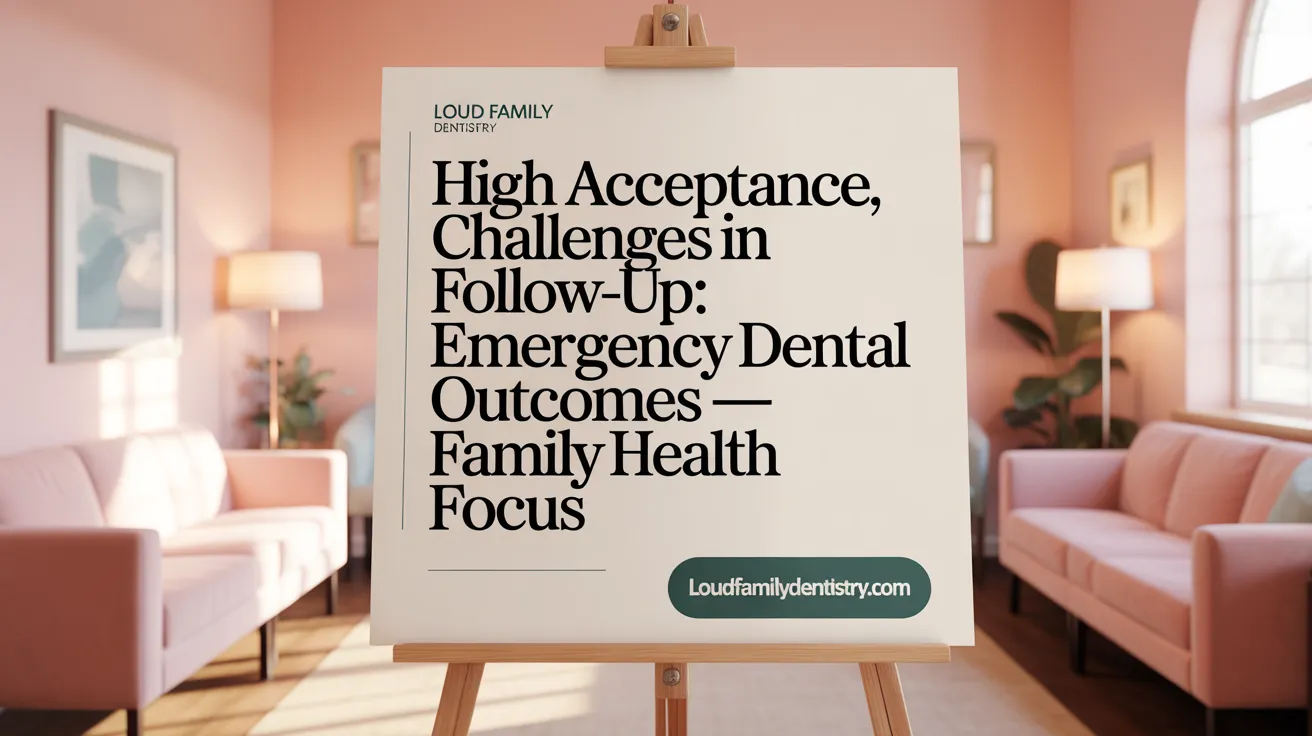
What are the overall success rates of same-day emergency dental treatments?
Emergency dental visits typically focus on alleviating pain and stabilizing the condition rather than providing permanent solutions during the initial visit. Studies reveal that the treatment acceptance rate during emergency dental encounters is quite high, reaching around 93.3%. This indicates that most patients agree to receive recommended treatments during their visit, with many completing the necessary procedures.
However, assessing the long-term success of these interventions is more complex. Follow-up adherence among patients is relatively low; only about 40.1% of patients return for follow-up visits. Even more concerning, less than one-third (31%) of patients referred from hospital emergency departments actually attend follow-up care at an emergency dental clinic. This low follow-up rate impairs clinicians' ability to evaluate the enduring success of initial treatments.
Among the subset of patients who do follow up, many complete additional treatment plans, suggesting that the immediate procedures are often effective in resolving acute issues. Nonetheless, without consistent monitoring and continued care, determining the effectiveness of these treatments over time remains challenging.
What are the challenges related to follow-up adherence?
Repeated follow-up is crucial for ensuring the long-term success of emergency dental interventions, yet patient compliance tends to be poor. Factors contributing to low follow-up include patient negligence, limited access to dental clinics, financial barriers, or a perceived resolution of the problem after initial treatment.
Immediate procedural success indicators
Immediate success in emergency dentistry is often gauged by patient satisfaction, pain relief, and the completion of necessary procedures such as extractions or radiographs. The prevalent use of radiographs (61% in children, 68% in adults) during emergency visits indicates an emphasis on gaining diagnostic clarity upfront.
In cases where procedures like extractions are performed, success is usually immediate, with the patient experiencing relief from acute symptoms. However, without subsequent follow-ups, it's hard to ascertain if these treatments prevented further issues.
Limitations in determining long-term success
Long-term success hinges on continued care, reevaluation, and patient compliance with follow-up visits. Given the low return rate for follow-up, plus the lack of systematic long-term outcome data, accurately measuring the enduring effectiveness of same-day emergency treatments remains difficult.
Thus, while immediate acceptance and procedural success are promising, comprehensive assessments of long-term outcomes in emergency dentistry still face significant hurdles.
Determinants Influencing Effectiveness of Emergency Dental Interventions

Which factors influence the effectiveness of emergency dental interventions?
The success of emergency dental care relies heavily on several interconnected factors. A primary element is the ability to diagnose conditions quickly and accurately. Prompt identification of issues such as pulp-related problems, periodontal infections, or traumatic injuries allows for targeted and effective treatment.
Categorization of emergencies plays a crucial role. Differentiating between trauma, infections, or post-procedural complications ensures that patients receive the appropriate level of care. For example, emergency visits often involve evaluative or palliative procedures like imaging or extractions, but appropriately triaged cases can lead to definitive treatments, reducing repeat visits.
Multidisciplinary collaboration is vital, especially for complex cases involving both dental and medical concerns. Coordinated efforts between emergency physicians, dentists, and specialists facilitate comprehensive management and optimize outcomes.
Access to specialized equipment, such as digital imaging technologies and advanced restorative tools like CAD/CAM, enhances diagnostic accuracy and treatment quality. These tools also enable same-day procedures, increasing efficiency and patient satisfaction.
Awareness and education about oral health further influence intervention effectiveness. Patients with higher oral health literacy and better access to preventive care are less likely to experience severe emergencies, reducing dependence on urgent interventions.
Socioeconomic factors, including insurance coverage and income levels, impact how quickly and effectively patients can obtain emergency care. Insurance, particularly Medicaid, is associated with frequent ED usage for preventable conditions like dental abscesses and caries.
In essence, the interplay of rapid diagnosis, appropriate emergency categorization, multidisciplinary cooperation, technological resources, and socioeconomic access determines how successfully emergency dental interventions address immediate oral health issues and improve long-term outcomes.
| Factor | Impact Description | Additional Details |
|---|---|---|
| Diagnostic accuracy | Enables targeted treatment, reduces unnecessary procedures | Incorporates digital imaging, intraoral scanners |
| Emergency categorization | Guides appropriate intervention, reduces repeat visits | Traumatic vs. infectious vs. post-procedural cases |
| Collaboration | Ensures comprehensive care for complex cases | Multi-specialty teamwork, shared treatment plans |
| Equipment and technology | Speeds up diagnostics and restorations, improves results | CAD/CAM, 3D printing, digital radiography |
| Oral health awareness | Prevents severe emergencies, promotes early care | Patient education, preventive programs |
Typical Outcomes and Follow-Up Results After Urgent Dental Care

What are the typical outcomes and follow-up results after urgent dental care?
Patients receiving emergency dental treatment often experience immediate relief from pain and a reduction in infection symptoms. The most common intervention in emergency dental clinics (EDCs) is tooth extraction, which addresses the immediate issue effectively.
However, the follow-up process reveals more about the overall success of urgent dental care. Approximately 70 patients who initially visited the clinic completed a follow-up visit, with 43% of these patients returning for further, more definitive dental treatments such as restorations or root canals, typically within 30 days. This indicates that while initial emergency care can resolve acute symptoms, many patients require additional procedures for long-term health.
Timing of follow-up visits varies significantly. Nearly 16% of routine follow-ups occur within two weeks (15 days), allowing timely assessment of treatment success or complications. Conversely, nearly half of the follow-up visits happen after 90 days, highlighting that ongoing care needs may persist much longer.
Success rates of treatments depend on incident type. For instance, luxation injuries tend to have favorable provisional outcomes, with fewer complications, compared to avulsed teeth which often require more complex procedures. Nonetheless, complications such as adverse drug reactions or the progression of underlying pathology can occur, leading to further intervention.
In some cases, patients experience no additional procedures during their emergency encounter—about 28%—indicating predominantly evaluative or palliative management. Prescriptions, especially opioids and antibiotics, are frequently issued post-visit, with nearly 58% filling opioid prescriptions within three days of discharge.
Overall, emergency dental care effectively addresses immediate issues, providing rapid symptom relief and infection control, but many patients follow up for additional treatments or face complications that require ongoing management. The high rate of subsequent visits underscores the importance of continuous dental care beyond initial emergency intervention.
Efficacy and Reliability of Same-Day Emergency Dental Procedures
How effective and reliable are same-day emergency dental procedures overall?
Same-day emergency dental procedures are proving to be both effective and dependable for many urgent dental needs. With rapid diagnosis and treatment, these approaches offer prompt relief for patients experiencing severe discomfort or pain. Technologies like CAD/CAM systems, digital imaging, and 3D printing enable dental restorations, such as crowns and bridges, to be completed within a single appointment. This not only saves time but also ensures high-quality results that typically have long-term durability.
Patient satisfaction tends to be high when they receive quick solutions that alleviate pain and address their dental issues on the spot. The ability to provide immediate treatment fosters trust and encourages patient retention. In cases where restorations or implants are needed, fixed procedures completed in one visit prevent the progression of dental diseases, reducing the need for multiple invasive procedures later.
Early intervention through same-day treatments helps preserve natural dentition, especially by removing the need for extractions or more complicated treatments down the line. As digital workflows streamline procedures and improve precision, the reliability of same-day emergency dentistry continues to grow. Overall, these advancements position same-day emergency dental care as a safe, efficient, and patient-centered approach for addressing urgent dental conditions.
Supporting Evidence for Emergency Dentistry Programs’ Impact
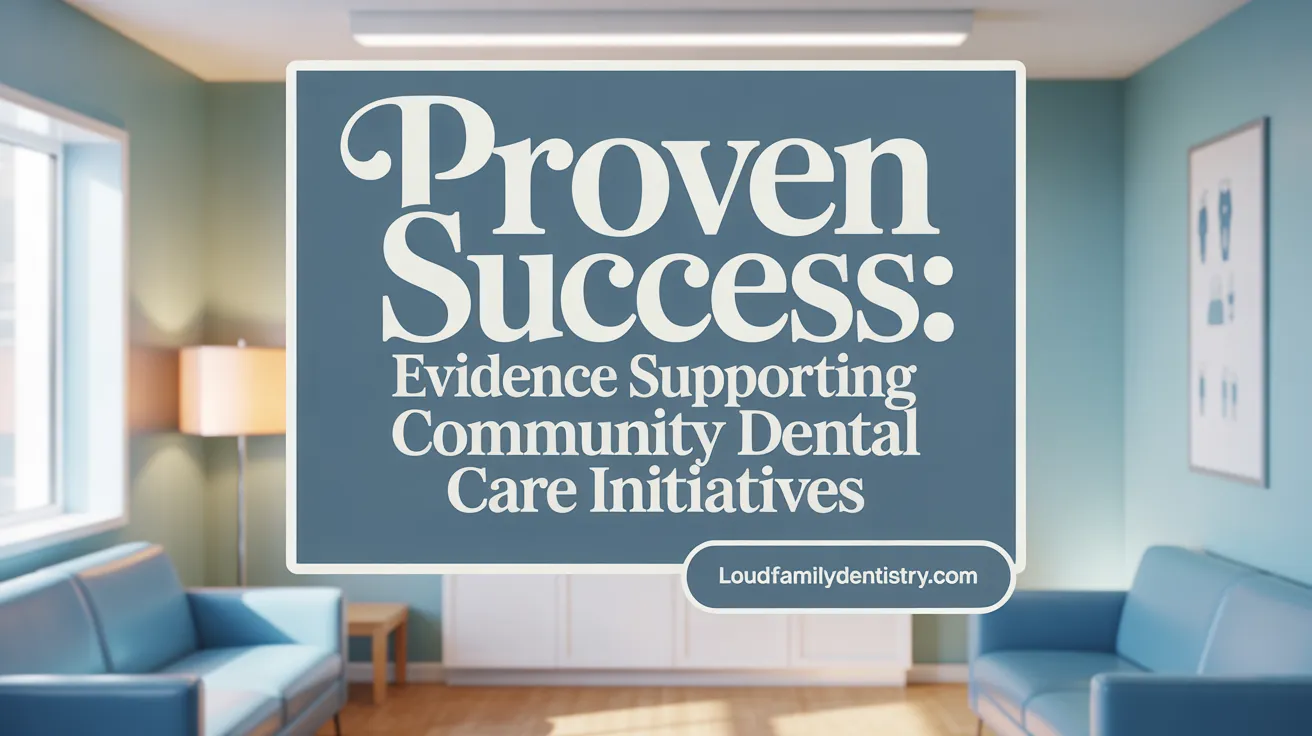
What evidence-based data supports the efficacy of emergency dentistry programs?
Various studies and program evaluations across different states have demonstrated significant positive effects of emergency dentistry initiatives. For instance, Michigan experienced a remarkable 72% reduction in emergency department visits related to dental pain over a five-year period. This decline highlights how targeted programs can effectively decrease unnecessary ED utilization.
These programs also enhance access to dental care for vulnerable populations, such as those with low income or without insurance. In Maine, some hospitals reported up to a 70% decrease in dental pain-related ED visits, leading to substantial Medicaid cost savings and better resource allocation.
In Washington State, collaboration between hospitals and dental societies resulted in the treatment of 380 patients in the first year alone, reducing preventable ED visits. Similarly, Virginia's hospital-based dental clinics cut dental-related ED visits by over half, with a 66% reduction in repeat visits.
A common feature of these programs is their focus on connecting patients to ongoing dental care, thus preventing future emergencies. They also prioritize appropriate pain management protocols. Limiting opioid prescriptions, which are frequently overused in emergency settings, is part of this strategy — aiming to reduce drug dependency risks.
Overall, the data strongly support that emergency dentistry programs are effective in decreasing emergency visits, improving access for underserved groups, reducing healthcare costs, and ensuring better pain management and treatment continuity. This evidence underscores their vital role in modern healthcare systems.
| Program Location | Reduction in ED Visits | Additional Benefits | Core Strategies |
|---|---|---|---|
| Michigan | 72% over 5 years | Improved access for vulnerable populations | Community outreach, affordable care |
| Maine | Up to 70% decrease | Cost savings, better resource use | Hospital collaborations, patient navigation |
| Washington State | 380 patients treated in first year | Reduced preventable emergencies | Hospital-dental society partnerships |
| Virginia | 52% decrease in ED visits | Lower repeat visits, improved care | Hospital dental clinics, care continuity |
The ongoing success and expansion of these programs highlight their importance in reducing healthcare system burden, increasing equitable access to dental care, and promoting responsible pain management practices.
Patterns of Follow-Up and Definitive Care After Emergency Dental Visits

What are the typical outcomes and follow-up results after urgent dental care?
Follow-up care following emergency dental visits remains a significant challenge. Research indicates that less than one-third—around 31%—of patients referred from emergency departments to specialized oral health clinics actually return for definitive treatment. This low follow-up rate hampers the ability to assess treatment outcomes comprehensively.
The average duration between the emergency visit and follow-up at the dental clinic is approximately 1.7 days, suggesting some patients seek further care relatively quickly. However, a troubling aspect of this process is that over 75% of patients who did not follow up could not be contacted by telephone to identify their reasons for not returning. This high percentage of uncontacted patients reflects difficulties in tracking and engaging patients for ongoing care.
Most treatments provided during these emergency visits are evaluative or palliative, with the most common procedures being tooth extractions. For patients who do follow up, many return for additional procedures, especially within the first month. Data shows that about 43% of adults who returned to the dentist after an emergency visit did so within a month for more definitive dental treatment.
Despite these figures, the gap in follow-up highlights ongoing challenges: ensuring patients adhere to recommended care plans and improving communication channels to remind and motivate patients for continued treatment.
This situation underscores the importance of integrating efficient patient tracking systems and emphasizing the need for better follow-up protocols in emergency dental care settings to improve patient outcomes and treatment success.
Role of Digital Dentistry Technologies in Same-Day Emergency Treatments
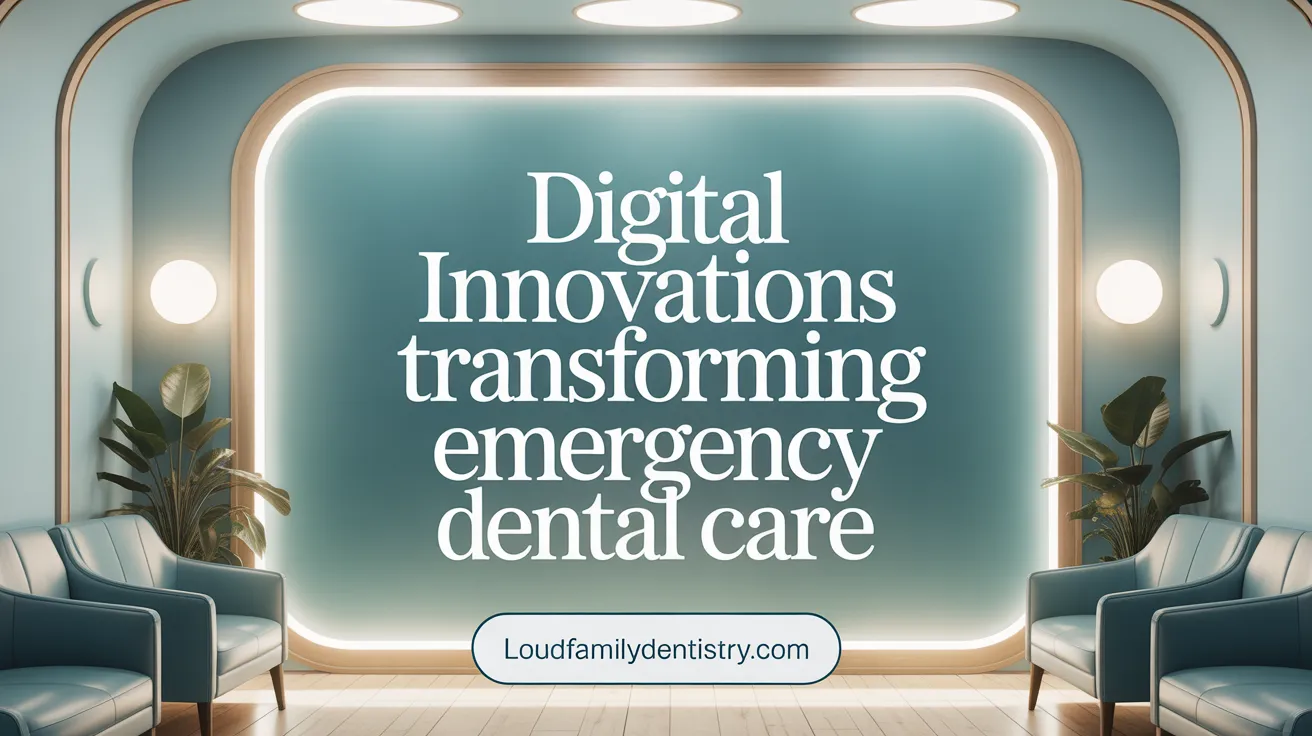
What are the benefits and viability of prompt, same-day dental treatments for emergencies?
Digital dentistry technologies are revolutionizing emergency dental care by making same-day treatments more practical and effective. Using CAD/CAM systems allows for the quick design and fabrication of high-quality restorations, often within a single appointment. This rapid turnaround means patients can receive definitive care without multiple visits, which significantly improves their experience.
3D printing further accelerates the process by producing accurate dental models and custom appliances on-site. This reduces dependence on external labs, cuts down waiting times, and enhances the fit and function of dental restorations. These advancements ensure that treatments are durable, with ceramics showing a 96.5% ten-year survival rate and BruxZir® Zirconia achieving a 100% success rate.
Digital imaging tools like intraoral scanners and digital X-rays improve diagnostic accuracy while exposing patients to less radiation. These images make it easier for practitioners to identify issues swiftly and explain treatment plans effectively, increasing patient understanding and confidence.
Together, these digital workflows streamline procedures, slashing treatment times considerably. Practices adopting same-day digital solutions see not only heightened patient satisfaction and trust but also improved operational efficiency. The integration of these technologies makes same-day emergency treatments a viable, efficient, and increasingly preferred approach, providing patients with faster relief and clinics with a competitive edge.
How do digital dentistry improvements affect practice profitability and patient satisfaction?
In-office digital systems reduce labor and material costs associated with outsourcing lab work. They enable clinics to offer quicker turnaround times, attracting more patients seeking immediate solutions. Patients benefit from less wait time and fewer visits, which enhances their overall satisfaction and trust in the practice.
Moreover, digital treatments backed by high-quality materials and precise imaging increase the longevity of restorations, thereby boosting patient confidence and retention. Practices that incorporate digital dentistry often see increased profitability through higher patient volume, enhanced reputation, and expanded service offerings. Overall, digital workflows are transforming emergency dental care by making same-day treatment not only feasible but also highly appealing to both patients and providers.
Medication Use Patterns Following Emergency Dental Visits
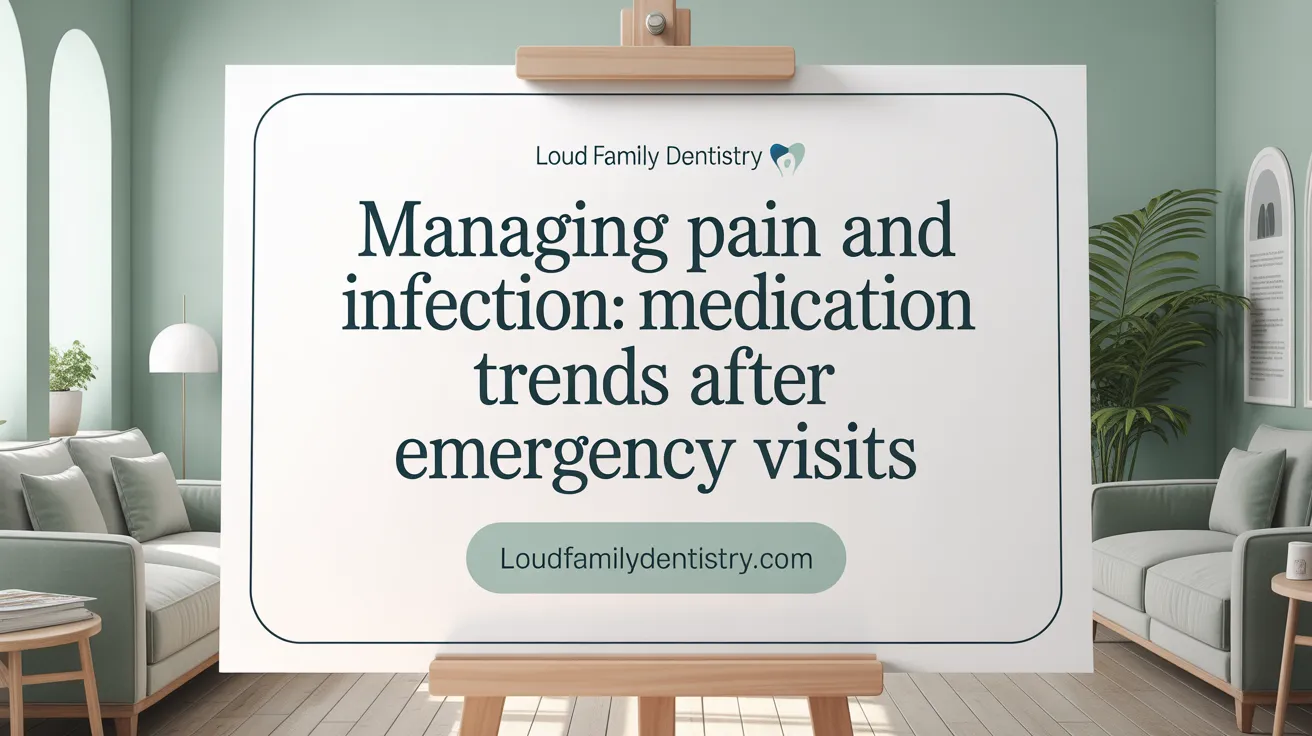
What are the common prescriptions in emergency dental care?
In emergency dental visits, a significant portion of patients receive medication to manage pain, infection, or inflammation. Data shows that approximately 36% of adult patients discharged from emergency departments for dental issues are prescribed drugs. Opioids are the most frequently prescribed medication, accounting for 28% of prescriptions, followed closely by antibiotics, which are prescribed within three days after ED visits to prevent or treat infections.
What are the rates of opioid and antibiotic prescriptions?
There is a notable pattern of high opioid and antibiotic prescriptions following emergency dental visits. Opioids, such as prescription painkillers, are prescribed in 28% of adult cases, raising concerns about potential dependency and misuse. Similarly, antibiotics are prescribed in about a third of cases, often to manage infection or prevent complications. The use of these medications emphasizes the importance of evaluating current prescribing practices.
What are the implications for pain management?
The prevalent use of opioids in emergency dental treatment highlights a need for improved pain management strategies. Traditional reliance on opioids poses risks, including addiction and adverse side effects. Evidence suggests that alternative pain control methods, such as non-opioid analgesics, can effectively manage dental pain with fewer risks. Emphasizing evidence-based guidelines can help clinicians optimize patient outcomes while minimizing medication-related hazards.
What are the risks and opportunities for guideline improvements?
The high rates of opioid prescriptions point to an opportunity for developing stronger, evidence-based treatment guidelines. By promoting safer prescribing practices, such as prioritizing NSAIDs or acetaminophen over opioids when appropriate, healthcare providers can reduce dependence risks and enhance patient safety. Moreover, integrating patient education about pain management options can facilitate more informed decisions.
Supporting evidence for the effectiveness of emergency dentistry programs
Research indicates that structured emergency dental care programs effectively reduce unnecessary ED visits and medication use. For example, programs that connect patients to ongoing community dental care have seen a 52-70% decrease in repeat visits and emergency prescriptions. These initiatives not only improve patient access to preventive care but also align with efforts to reduce reliance on high-risk medications like opioids. Their success underscores the value of coordinated, community-based approaches in managing dental emergencies.
| Aspect | Data | Additional Notes |
|---|---|---|
| Prescription rate | 36% of adult patients | Reflects high medication reliance |
| Opioid prescriptions | 28% | Potential overuse concern |
| Antibiotic prescriptions | ~38% | Used within 3 days post-discharge |
| Impact of programs | Up to 70% reduction | Connecting patients to ongoing care |
Financial and Healthcare Burden of Dental Emergencies in Emergency Departments
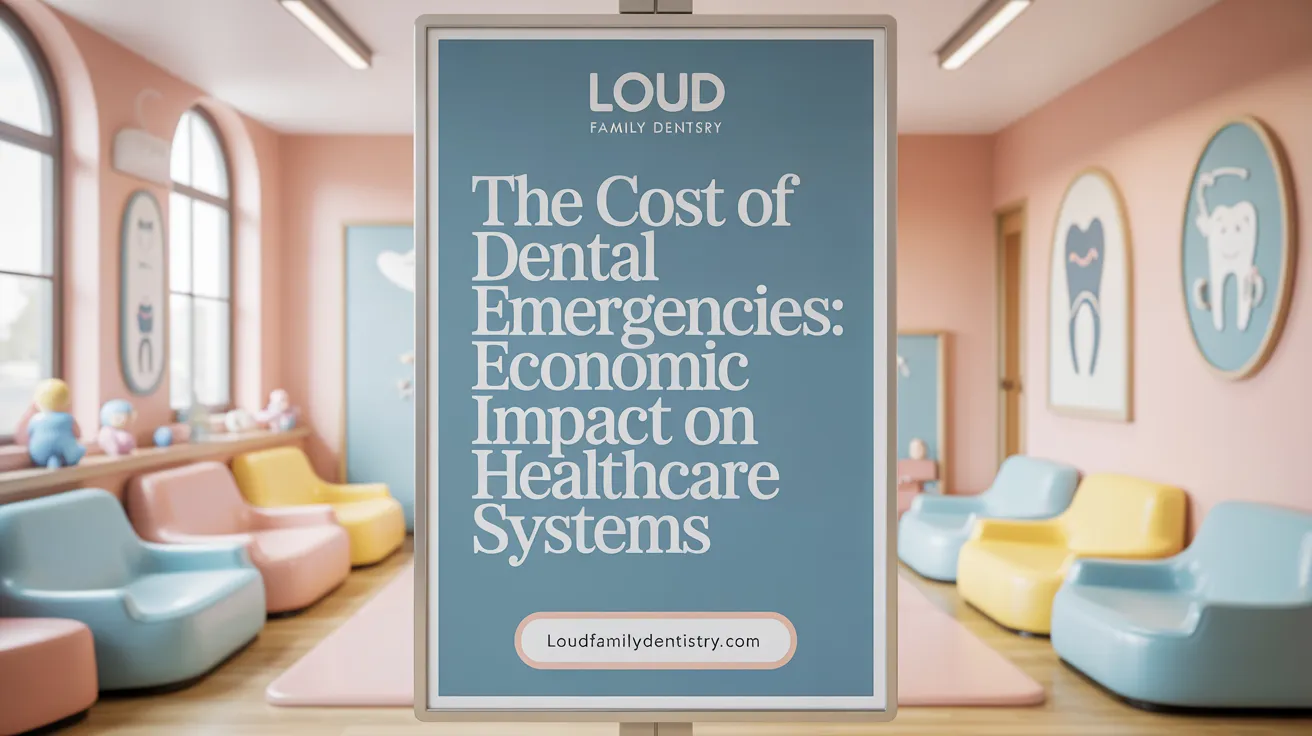
What are the ED visit costs for dental problems?
Emergency department (ED) visits for dental issues carry a high financial burden. The average cost per visit is approximately $1,487, which is significantly more expensive than routine dental visits that typically range between $90 and $200. Over the course of a year, these emergency dental visits in the United States alone amount to about $1.6 billion, illustrating the substantial economic impact of dental emergencies on healthcare systems.
How do costs compare with dental office visits?
Routine dental office visits are generally more cost-effective. While a standard dental appointment costs around $90 to $200, ED visits are nearly ten times more expensive. This stark difference highlights the economic inefficiency of relying on emergency departments for non-traumatic dental problems, which often could be managed in a dental office setting with preventive care or scheduled treatments.
How does insurance status affect ED visits?
Data shows that uninsured patients and those covered by Medicaid tend to visit EDs for dental issues more frequently than those with private insurance. This disparity is linked to barriers in accessing regular, preventive dental care. Patients lacking adequate coverage are more likely to seek urgent care in hospital emergency departments for problems that could potentially be prevented or treated more cost-effectively outside of emergency settings.
What are the broader economic implications for healthcare systems?
The high costs associated with dental emergencies create a significant economic strain on healthcare resources. With annual costs reaching into billions, and the frequent use of EDs for preventable conditions like abscesses and caries, there is an urgent need for targeted programs. The ADA's Emergency Department Referral Program and similar initiatives have shown promise in reducing unnecessary ED visits, saving costs, and redirecting patients to appropriate dental care. For example, some states experienced up to a 70% reduction in ED visits when community-focused dental programs were implemented.
| Aspect | Details | Additional Notes |
|---|---|---|
| Average cost of ED visit | $1,487 | Higher than routine dental visits; represents a major expense |
| Cost of outpatient dental care | $90 - $200 | More affordable alternative; emphasizes prevention |
| Annual costs for dental ED visits | $1.6 billion in the U.S. | High overall burden; preventable with better care access |
| Impact of insurance status | Higher ED use among uninsured and Medicaid members | Highlights need for expanded coverage and preventive programs |
| Effectiveness of programs | Up to 70% reduction in some areas | Demonstrates potential savings and healthcare improvements |
Evidence supporting emergency dentistry programs
Research consistently supports the efficacy of initiatives like the ADA's ED referral program. These programs effectively decrease unnecessary ED visits by connecting patients to ongoing community dental care, reducing healthcare costs, and promoting more appropriate treatment pathways. For example, states implementing such programs saw reductions of over 70%, translating into significant savings and more efficient care delivery.
Patient Outcomes and Long-Term Care Following Emergency Dental Visits
What are the typical outcomes and follow-up results after urgent dental care?
After receiving emergency dental treatment, most patients tend to return for further care within the year. Data shows that about 78% of patients come back within 12 months, primarily to address ongoing or routine dental needs rather than experiencing new emergency episodes.
A small but notable percentage—around 14%—of patients who follow up establish a long-term relationship with university dental clinics. This reflects a successful transition from emergency care to regular dental treatment providers.
Timely intervention during emergency visits—such as prompt management of infections or trauma—can improve the patient’s oral health outcomes. However, not all patients achieve complete resolution after initial treatment. Some still require additional emergency visits due to complications or untreated underlying issues.
Moreover, follow-up care often involves procedures like tooth extractions, which are common in emergency settings. Despite initial interventions, some individuals face recurring emergencies, underscoring the importance of continuing dental care and preventive strategies.
Overall, emergency dental visits serve as a gateway to ongoing oral health management. When coupled with proper follow-up and regular dental visits, they can significantly enhance long-term dental health and reduce the likelihood of recurrent issues.
Impact of Emergency Dentistry Programs on Hospital Emergency Department Utilization
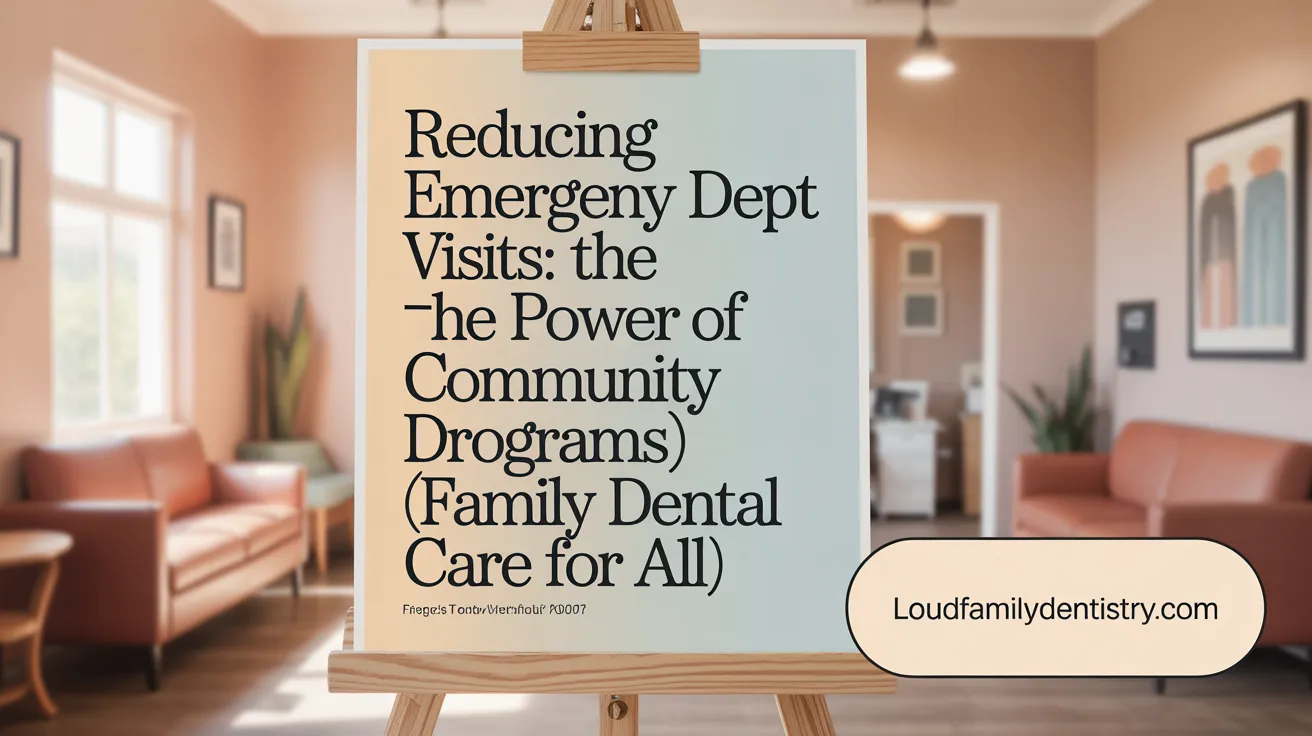
How effective are referral programs in reducing ED visits for dental issues?
Evidence indicates that emergency dentistry referral programs significantly decrease the number of patients seeking emergency treatment for dental problems. These programs strive to connect patients directly with community dental services, improving access and outcome.
What statistics from multiple states demonstrate program success?
In Michigan, a comprehensive program led to a 72% reduction in dental-related emergency department visits over a five-year span, benefiting over 3,000 patients by providing free or reduced-cost dental care.
Maine experienced up to a 70% decline in ED visits for dental pain at participating hospitals, resulting in substantial Medicaid savings.
Virginia's hospital-based dental clinics achieved a 52% decrease in dental-related ED visits, while also reducing repeat visits by 66%.
These reductions highlight the effectiveness of integrated referral programs in not only decreasing emergency visits but also in promoting consistent dental health care.
How do these programs impact repeat ED visits and overall healthcare costs?
By establishing ongoing dental care pathways, these programs significantly cut down on repeat emergency visits, fostering long-term oral health management.
The benefits extend to the broader healthcare system — lowering costs associated with unnecessary hospitalizations and treatments. Patients benefit from better care continuity, reducing reliance on costly emergency services.
What is the overall benefit to patients and healthcare systems?
Patients gain improved access to preventive and routine dental care, avoiding pain and complication escalation.
Healthcare systems see reduced financial burdens, optimized resource use, and improved patient outcomes, making these programs a promising strategy for managing dental emergencies more effectively.
| State | Percentage Reduction in ED Visits | Additional Outcomes | Cost Savings & Patient Benefits |
|---|---|---|---|
| Michigan | 72% | Over 3,000 patients received free dental care | Reduced hospital costs, enhanced access |
| Maine | Up to 70% | Noted at some hospitals | Decreased Medicaid costs, better oral health |
| Virginia | 52% | 66% fewer repeat ED visits | Improved continuity of care |
Implementing targeted referral programs across states seems to be a proven strategy to reduce emergency dental visits, improve patient care pathways, and lower hospital burdens.
Challenges in Emergency Dental Treatment Delivery and Patient Follow-Up
Which factors influence the effectiveness of emergency dental interventions?
Emergency dental interventions often face significant challenges that impact their success and long-term outcomes. One major hurdle is the low rate of follow-up, with less than one-third (31%) of patients referred from hospital emergency departments (ED) to emergency dental clinics (EDC) actually returning for definitive care. Alarmingly, 75% of those who did not follow up could not be contacted, mainly due to communication barriers.
Many patients are unreachable by telephone, making it difficult to understand their reasons for not completing treatment. This lack of contact hampers efforts to ensure proper care, follow-up, and evaluation of treatment results. Socioeconomic factors also play a role, as many patients live in lower-income areas with limited access to regular dental care or health insurance coverage. Consequently, they may defer follow-up visits due to cost concerns or lack of awareness about the importance of ongoing care.
Moreover, patients' understanding of their dental health, coupled with limited health literacy, can contribute to poor adherence to recommended treatments. Those with fewer previous dental visits are at higher risk; prior regular dental care acts protectively against unnecessary emergency visits but is often lacking in underserved populations.
Strategies to improve follow-up and treatment success include implementing better communication methods—such as reminder systems or patient education programs—and creating targeted outreach efforts to assist socioeconomically disadvantaged groups. Digital dentistry advancements, like telehealth consultations or digital follow-up tools, can also facilitate more effective patient engagement. Ultimately, addressing these barriers is essential to ensuring emergency dental interventions lead to successful, lasting outcomes and to reduce recurrent emergencies.
Conclusions on Same-Day Emergency Dentistry Success and Future Directions
The data reviewed affirm the critical role of same-day emergency dental treatments in providing prompt, effective care that mitigates pain and prevents complications. High treatment acceptance and initial procedural success highlight the viability of same-day approaches, bolstered by advances in digital dentistry technologies enhancing treatment speed and quality. However, challenges remain in patient follow-up adherence and comprehensive long-term outcome assessment. Emergency dentistry programs have demonstrated efficacy in reducing emergency department burdens and improving access, particularly for vulnerable populations. Addressing barriers to continuity of care and optimizing pain management protocols will enhance effectiveness further. Overall, same-day emergency dental care represents a reliable, increasingly refined solution to urgent dental needs, with promising prospects for continued advancements and wider adoption.
References
- Determining the rate of follow-up after hospital emergency ...
- Emergency and urgent dental visits among Medicaid ...
- Same-Day Dentistry: The Rising Value of Convenience for ...
- Emergency department visits for dental problems among ...
- Analysis of adult dental emergencies at a medical center in ...
- Emergency Department Referrals
- Determining the rate of follow-up after hospital emergency ...
